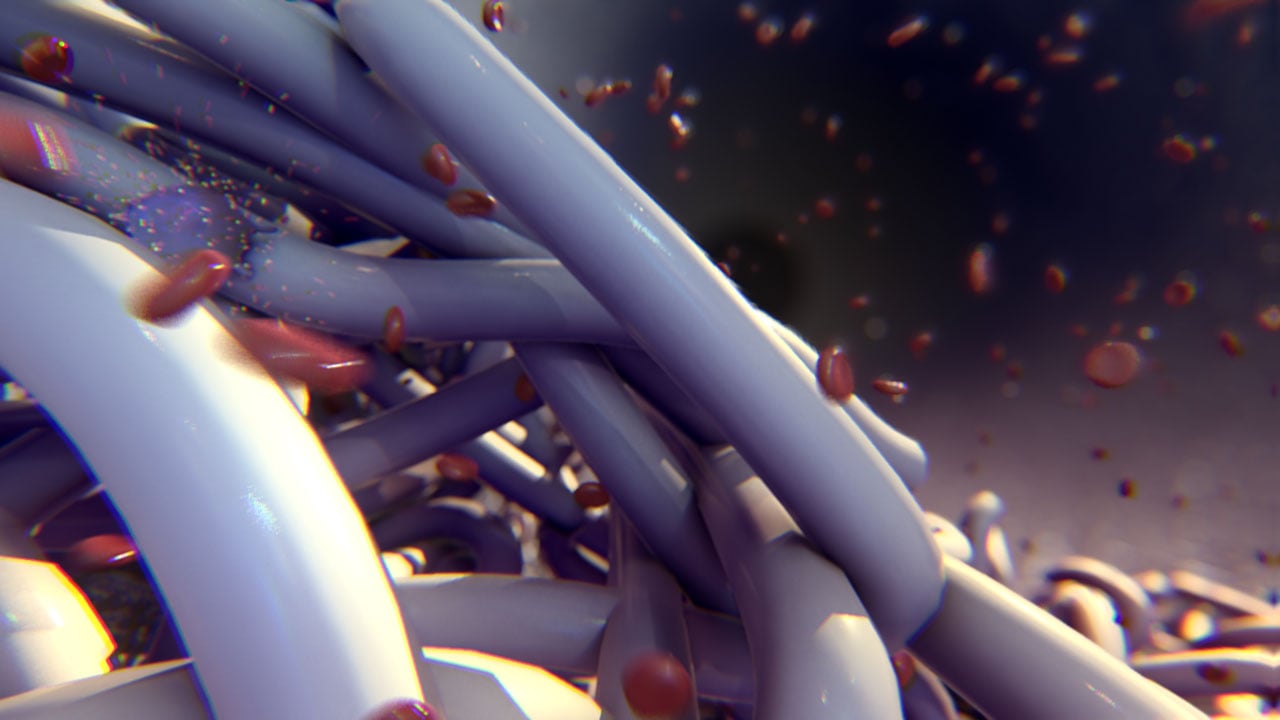
‘Self-healing’ heart valves and blood vessels are not science fiction, but a reality. Using a technology based on ‘natural recovery’, medtech start-up Xeltis offers an alternative for people with clogged veins or cardiovascular problems. Located on the campus of the Eindhoven University of Technology (TU/e) in the Netherlands and with employees in America, Germany, Belgium and the United Kingdom, CEO Elianne Schutte wants to bring the innovation to the market as soon as possible. A European loan of €15 million will give the company the boost it needs, Schutte says.
Natural
“Our technology is not new, yet around the world, we are the furthest along in terms of its application,” Schutte points out. The technology is based on the supramolecular polymer materials for which Professor Jean-Marie Lehn received a Nobel Prize in 1987. In a nutshell, these polymers enable the patient’s body to naturally reconstruct a new blood vessel or heart valve. “Given that we are so far along as a technology platform, we also want to be the first to bring it to the market,” she adds.
Xeltis is using the loan from the European Guarantee Fund (aimed at helping European companies emerge from the current crisis) to accelerate clinical testing on heart valves and blood vessels.
“It may sound like science fiction, but the body really can make a new heart valve or blood vessel itself,” says Schutte. What starts out as an artificial implant eventually ends up as tissue from the body’s own body. “You can compare it to a wound in your hand. The body is able to repair itself, so the wound closes.” The polymer’s material is so porous that cells can nestle inside it. Those cells eventually create new tissue. At the same time, those cells gradually break down the implanted material. “In the long run, your body makes its own implants. That’s the principle underlying our technology.”
Cows
In clinical studies, Xeltis tested what is known as the pulmonary heart valve. This was done on children with a congenital heart defect that causes that particular heart valve to fail, such as Blue Baby Syndrome. “A child doesn’t get enough oxygen then, blood is continuously flowing back into the heart,” Xeltis clarifies. Usually those children get a valve made from material derived from cows. “That’s just a nuisance and it causes that valve to constrict. Then that valve has to be taken out again. And a child grows up, which in turn creates another problem.”
A heart valve made from cow tissue does not grow with the body. With the heart valve made of a polymer, that problem disappears, Schutte explains. “At least we have yet to prove that scientifically, but a number of children have already had our valve for four or five years now.” One child who received this valve at age two is now seven. “So the valve must have grown with them. That’s our theory now behind how the product works.”
Because the market for medical aids for children is small, the company sought new applications for it. Those became tubes made from polymers that can replace blood vessels. Xeltis launched a study into this two and a half years ago. It should be a godsend for people suffering from kidney failure, Schutte notes.
Ruptures
These kinds of patients must go to a dialysis center two or three times a week. Ordinarily, there is not enough blood flowing through a vein for dialysis to take place. Therefore, the vein is connected to an artery, a bypass, Schutte goes on to explain. “However, the vein is not used to this amount of blood. If you puncture it straight away, it quickly ruptures. The vein has to get used to it for several months before dialysis can be started. Also, the vein can also become clogged. This simply doesn’t work very well.”
A vein made from your own tissue will function much better, according to Schutte. Xeltis has only just begun developing polymers that can replace veins and is exploring several avenues. “We can also apply this to the blood vessels around your heart,” she says. These blood vessels can become clogged with cholesterol buildup and cause a heart attack. “The standard procedure now is for surgeons to then remove a huge vessel from the patient’s leg and use that.”
Major surgery, Schutte maintains, with a lengthy recovery period. Patients not only suffer from open heart surgery, but sometimes even more so from the scar on their leg. People can also get an infection there. “In short, a lot of hassle and a lot of pain.”
Most difficult
“So this is definitely a solution that a lot of people are looking forward to. Everybody knows someone who has had to undergo this kind of procedure.” It is, however, one of the most difficult products to make, Schutte emphasizes. “These concern such narrow vessels with very narrow diameters. On top of that, there isn’t a strong flow, as it’s called, around the heart. Just try to keep that open without thrombosis occurring.”
Xeltis made the first vessels from polymers with the help of previous investments. In doing that, the start-up managed to collect the first data. With the new injection of European capital, the research and development team can do even more testing and collect even more supporting evidence.
That Xeltis received the loan, is something that Schutte finds very special. Prior to this, the company underwent a rigorous due diligence review of its economic, legal, fiscal and financial circumstances, among other things. “We needed capital without having to immediately go into an investment round. That can take a very long time. This loan really affords us the opportunity to get a lot further without the risk of having to suddenly stop the program if you can’t raise the funds. Then you end up leaving the innovation sitting on the shelf. This loan means that we can continue our programs and not have to stop in the interim.”

